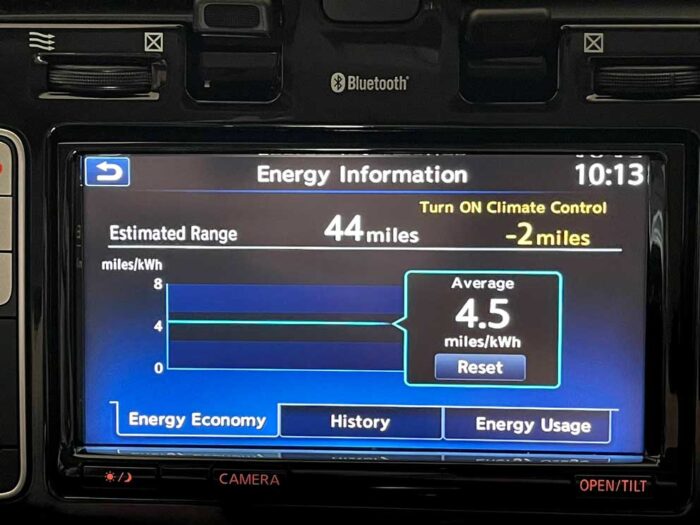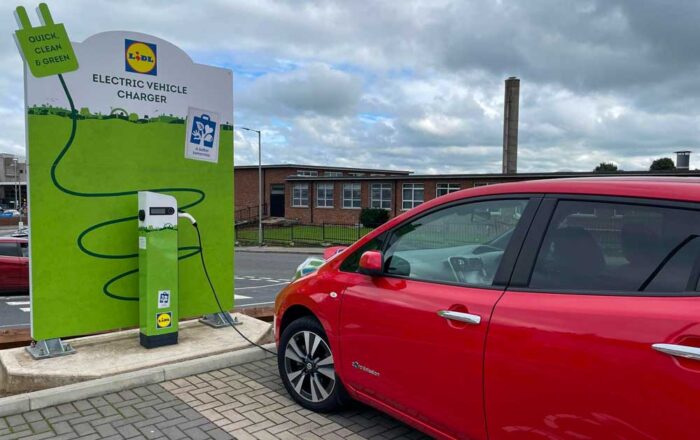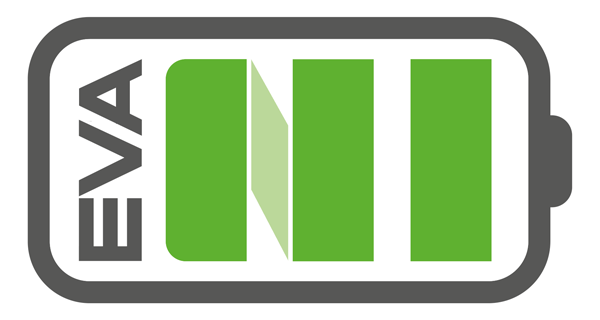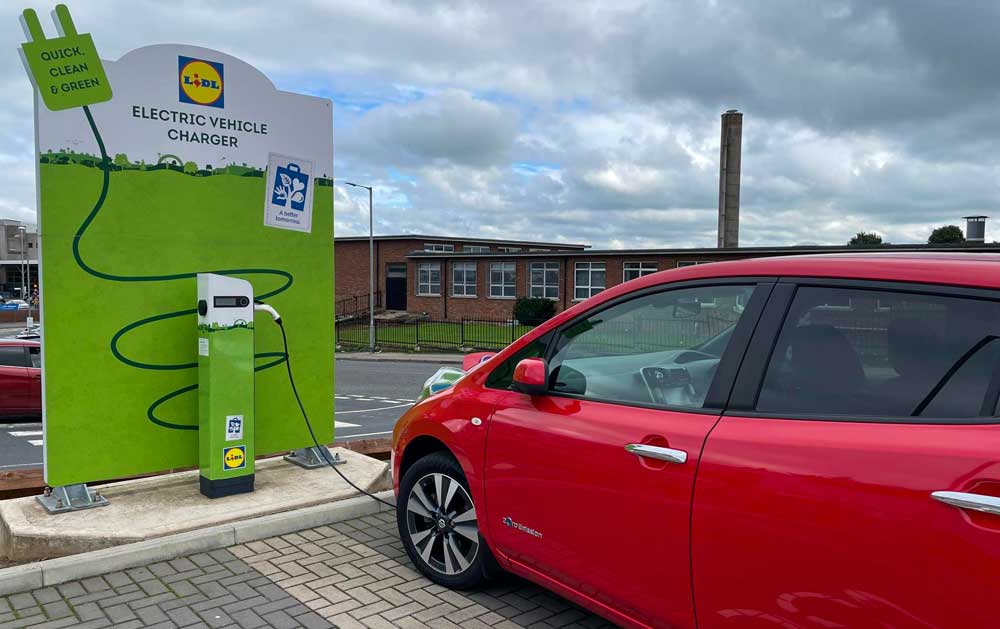I’m a 25 year old female driver and first time EV buyer. We’re a 2 car household and so with my relatively small annual mileage I was happy to go straight to a full Battery Electric Vehicle (BEV), even though it would be a second hand car with a smallish range.
Nicer to Drive
After considering a few different models and looking around for several months, I finally picked up my Nissan Leaf back in June. I have to admit I was nervous about driving an automatic for the first time, but honestly, within a few miles it was second nature. It’s such a lovely, smooth, quiet, relaxing way to get around and genuinely much nicer to drive than any ‘normal’ car I’ve owned in the past.
The Leaf has a special ‘B’ mode, used to increase regenerative braking (the car puts energy back into the battery as you slow down). This means journeys on main roads are, for the most part, a one-pedal driving affair. I tend to keep the car in it’s ECO mode too, this reduces the performance but increases range and efficiency.
Costs
It did cost a little more than my last car, but I really wanted heated seats so that meant going for the Tekna model. I also pushed my budget a bit to get into the 2017 model year with its 30kWh battery, finally finding one from a dealer with under 30,000 miles and a 12 month warranty (the 30kWh Leaf also has an 8 year, 100,000 mile battery warranty from Nissan).
My insurance is cheaper than previous petrol crossover by around £90 a year and the Vehicle Excise Duty (Road Tax) is free. Pretty good, but what about the fuel costs?
A Kilo What?
If you’ve been thinking of buying an EV too, then you will already have seen lots of mentions of a kilowatt hour (kWh), but what is it? There’s some good detailed information here, but the easy answer is it’s the same as ‘a unit’ of energy on your electricity bill.
We are paying around 17p for our electricity at home and according to the on-board computer, since I got it my car is doing 4.5 miles for every kWh of energy it uses. According to the EV Database the 2017 Leaf should average 3.7 miles / kWh over a full year so let’s use that more pessimistic figure instead.

17 (pence per kWh) ÷ 3.7 (miles per kWh) = 4.6 pence per mile
That works out at 4.6 pence per mile. That calculation is a little simplified as it ignores standing charges for example. With an Economy 7 tariff at home It could be much cheaper than that, as low as 2.1 pence per mile. I usually do around 6,000 miles per year so my fuel costs for 12 months should be something like….
6,000 (miles) x £0.046 (cost per mile) = £276 (Normal Tariff)
6,000 (miles) x £0.021 (cost per mile) = £126 (Economy 7 Tariff)
That compares to over £800 a year for fuel for my last car. Adding in the other savings mentioned above and hopefully the lower on-going maintenance costs that EVs benefit from, I should be paying almost £1,000 a year less running this car than my last one.
A question I’ve been asked a few times is how much does it cost to fully charge at home. Even though it’s a 30kWh battery, there’s always some space left for the battery to manage itself, so the actual usable portion of is more like 28kWh. So the calculation for a full ‘tank’ (that takes me around 100 miles) looks like this…
28 (kWh) x £0.17 (cost per kWh) = £4.76
Actually it’s starting to look like we are going to do more miles than we thought in the Leaf. We seem to take the EV at every opportunity now, knowing it’s so much cheaper than the other car to run and nicer to drive.
Home & Public Charging
Another thing I’ve learnt is that there’s 2 types of charging on my Leaf (and nearly every other EV). Charging at home and other ‘Destination Charging’ like at hotels, cinemas, retail parks etc is AC charging. This uses the normal Alternating Current that we’ve all got at home and work. In this case the charger is actually built into the car (the thing we call a charger is just a fancy power outlet) which means each EV has different charging capabilities and speeds.
The Leaf is one of the slowest charging cars in this scenario as the standard on-board charger is rated at just 3.3kW. So while a lot of public destination chargers are capable of delivering 22kW, the leaf can only use a fraction of that. Again a bit of calculation gives us a good idea of what this means in reality.
3.3 (kW) x 1 (hour) x 3.7 (miles per kWh) = 12 (miles per hour)
That’s 12 more miles of range added for each hour on an AC charger. When it was new, the Leaf had an option to double that speed to 6.6kW but at around £1,000 not many owners ticked this box. Many modern EVs now charge in the 7kW – 11kW range (26 to 40 miles per hour), while the Renault Zoe can utilise the full 22kW (up to 80mph). You can find out these speeds for the EV you are considering at the EV Database and there’s currently a grant available for a home charger which is great to have.
Public charging is the bit where the wheels come off slightly in Northern Ireland. Take a look at the EVANI Facebook Group and most days you’ll see complaints about the network here. It looks like things are slowly starting to improve though with some replacement chargers being fitted as well as some private ones starting to pop-up like this EasyGo one at Lidl I used recently.

I applied for the ESB card to allow me to charge on this public network and it came in around 2 days. There are 2 standards for Rapid Charging available. The newer CCS (most modern EVs now use this) and the older CHAdeMO standard my Leaf uses (some rapid chargers in NI only offer CHAdeMO currently). These machines bypass the cars on-board charger and send DC (Direct Current) straight to the battery. These are indeed ‘Rapid’ chargers and on a 50kW my car can go from nearly empty to around 80% in just 25 minutes. I still have a bit to learn about charger etiquette but I know it should be a short charge and so I generally stay with my car on a rapid.
Other Apps to Install
As well as the ESB app I’ve installed Need to Charge which provides a way to let EV users request that you move your car off a public charger if they need it urgently to get home for example. The Zap-Map and PlugShare apps are also useful to find chargers.
Summing Up
I love my new (to me) Leaf, especially the driving experience and low running costs. I only need to charge once or twice a week and as I do it at night, I know most of the power comes from the wind. It’s amazing to be driving around on renewable energy and keeping all those nasty fumes out of the town too. If you are considering a move to an EV and can charge at home then I’d definitely say go for it!


2 Responses
Great article. I’d add A Better Route Planner (ABRP) to the list of apps one should install
Hi I drive a vw id3 first edition and am getting 210 miles in summer and about 180 in winter on a full charge This is my 2nd ev car I agree with most points made in this article except the bit about public charging Over the last 5 years access to public charging has become more difficult. Very few new chargers,old ones broken and ,with more ev’s on the road it is a nightmare which non of ore elected politicians seem to care about. Hope you continue to enjoy your ev as you said great cars to drive just make sure you charge at home on economy 7